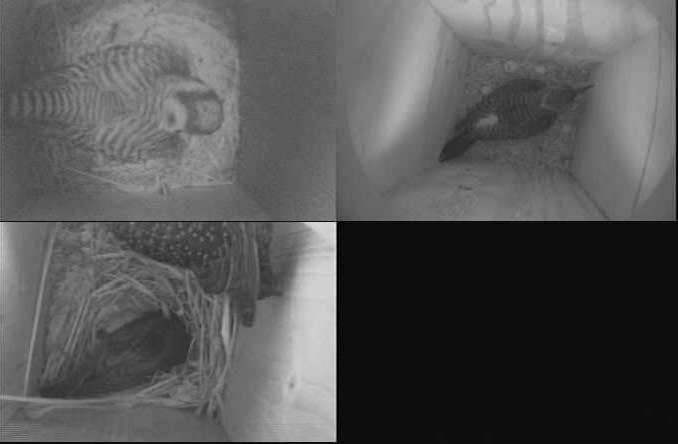
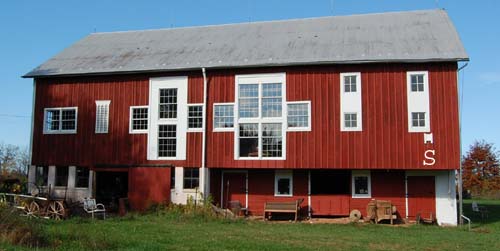
Richard and Diane Van Vleck Personal Pages The Home Habitat |
Northern Flicker
2010-2016 Nest Box Use
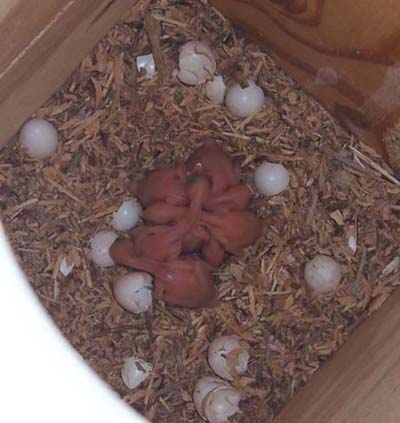
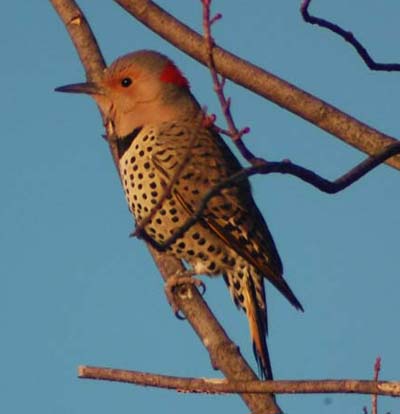


Northern flickers successfully nested in a nest box on our barn in 2010, following months of fierce competition from European starlings. I was surprised to observe flicker and starling battles in nest boxes in the fall of 2008 and have since monitored their nest boxes during fall and winter as well as during the nesting season. The male Northern flicker does use nest boxes for night roosts in winter, but the starlings seemed to only be interested in reserving future nest sites. They would remove wood chips, sometimes bring nesting material, but rarely remain in the box for any length of time. The flickers failed to nest in 2009, despite my frequently trapping pairs of starlings in the flicker boxes. In 2010, starlings drove the flickers from Box A on the barn wall, and then from box B. The flickers then excavated a hole under the eaves around the corner on the west wall. This simply opened into the barn and I immediately closed the hole, since it would allow the big brown bats to enter. The bats spend several weeks within a foot of this flicker hole each summer. Next, the flickers moved to the east wall of the barn and excavated a hole unusually low on the wall. It turns out that they chose the only place on any side of the barn where there is a double walled grain bin. It's likely that the flicker could detect the double wall from the sound of his tapping. This allowed the male to begin roosting in the wall, even though the entrance was several feet up from the floor. I then removed the inside wall boards and placed a nest box (box S)inside the outer wall, using the flickers entrance hole. They seemed to greatly appreciate that bit of magic and successfully reared a brood in this box. I did have to trap several starlings that tried to drive them off. The video capture above shows the female kestrel in box A, the male flicker brooding in box S, and a pair of starlings beginning to nest in box B. In the barn photo above, S marks the entrance to the flicker box S. The white board is a hole cover trap to remove starlings.
2010 Northern flicker nestlings in box S |
|
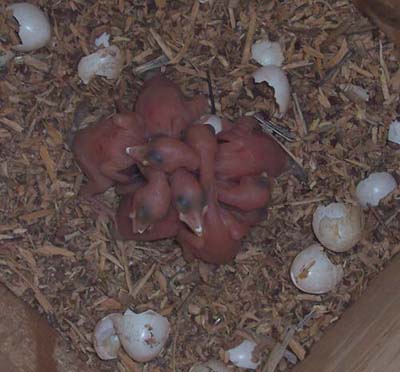 |
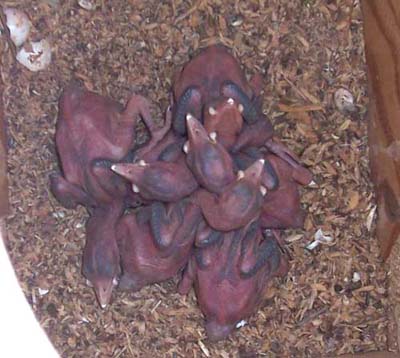 |
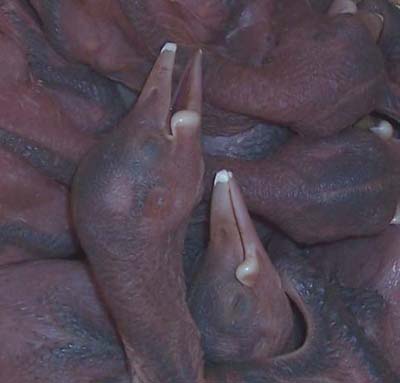 |
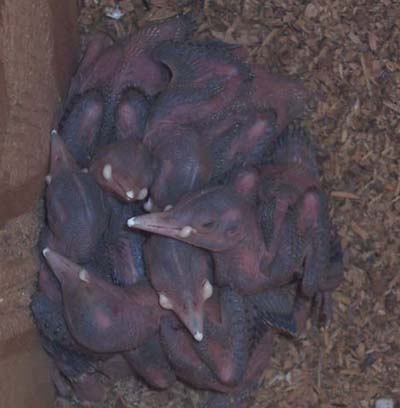 |
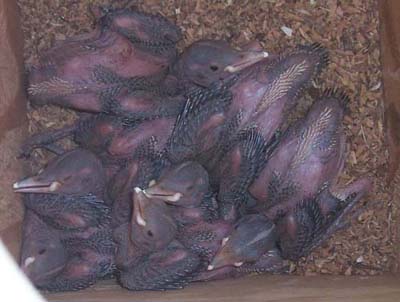 |
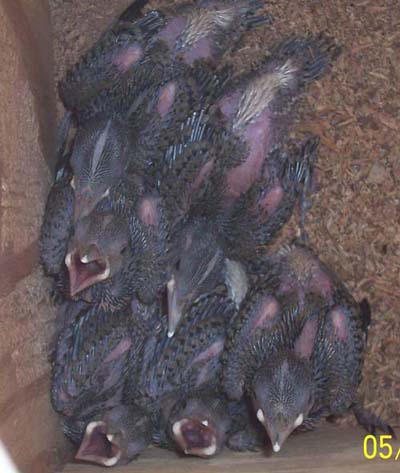 |
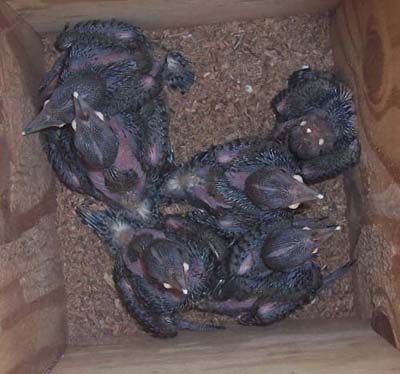 |
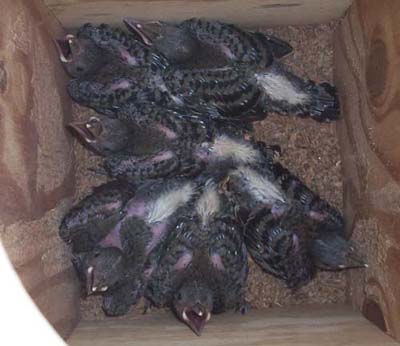 |
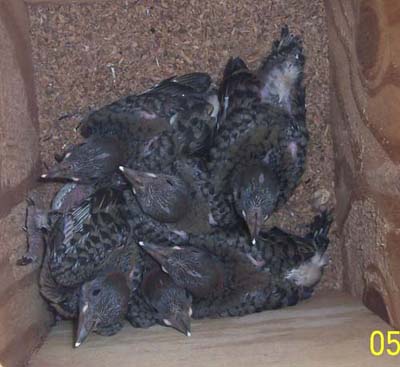 |
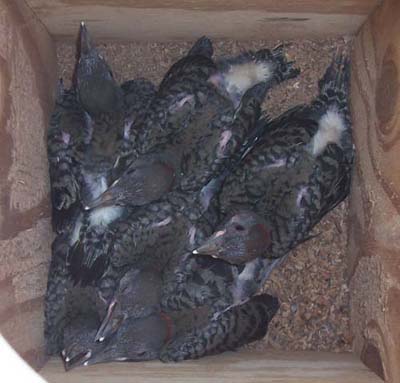 |
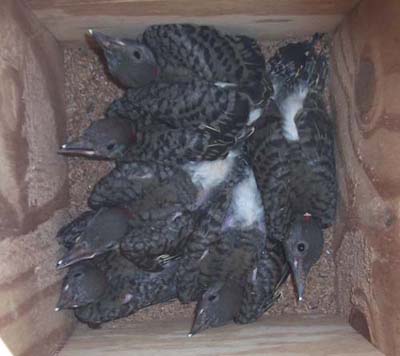 |
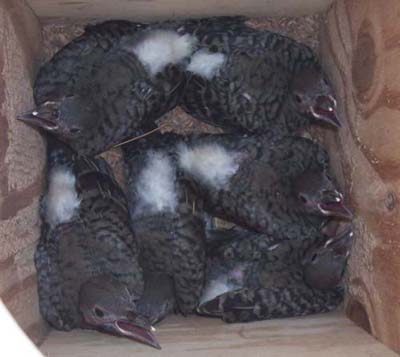 |
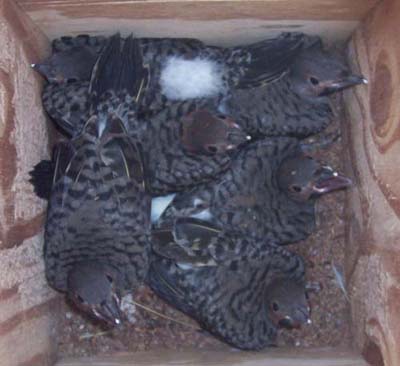 |
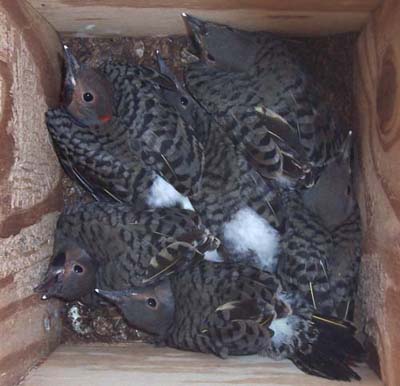 |
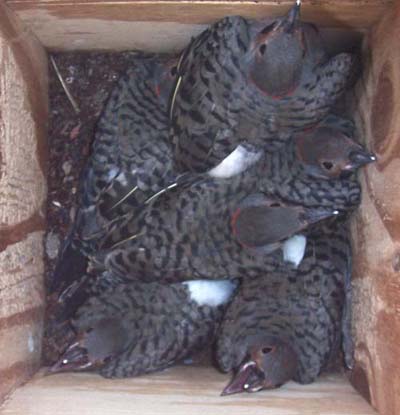 |
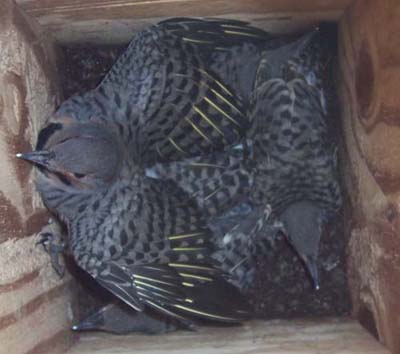 |

Left - Box S nestling soon to fledge
The 2014 flicker nesting
Flickers this year nested in box A, which had been used in previous years by American kestrels. The male kestrel frequently visited box A in early spring, but the female finally insisted on using box B, another flicker box on the same wall of the barn. This was likely a replacement female kestrel, rather than the one that had successfully nested in box A in previous years.
Starlings repeatedly entered box A and were trapped as soon as they began nest building. The flickers seemed to give up on this and the other available boxes while a seemingly endless parade of starlings entered the boxes and eventually were trapped. By June, the mob of starlings had lost interest in nesting and on June 7, the first flicker egg was laid in box A. At this time, the kestrels were feeding a single nestling and the barn owls were incubating 4 eggs, all in boxes on the same wall. The flickers' clutch of 5 eggs resulted in 4 nestlings, all of which fledged.
I am becoming convinced that the only practical way for Northern flickers to deal with starlings is to delay nesting until the end of the starling nesting season. That doesn't mean they have altered their biological clock, it simply means that they aren't successful at competing with the hoards of starlings. The flickers try to secure a nest site all spring, but succeed only after the starlings leave. I have blocked all of my repeating starling traps, but will resume video monitoring the 4 flicker boxes in spring and manually trap starling pairs using the boxes.
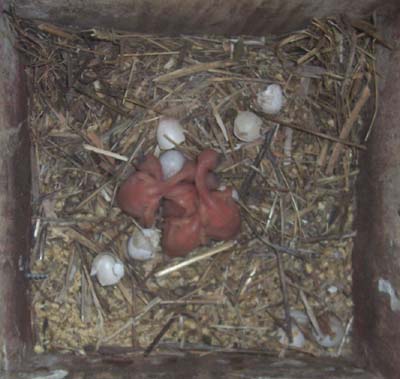 |
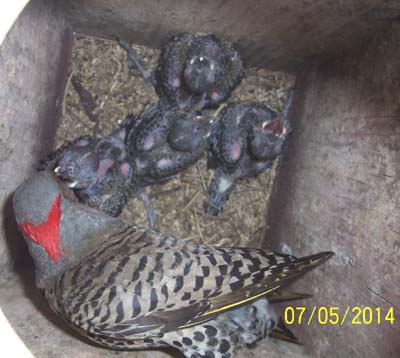 |
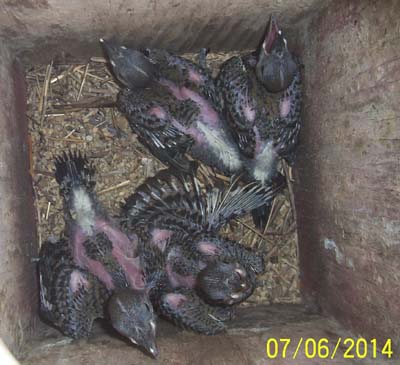 |
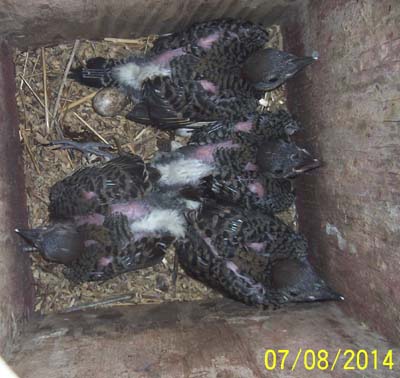 |
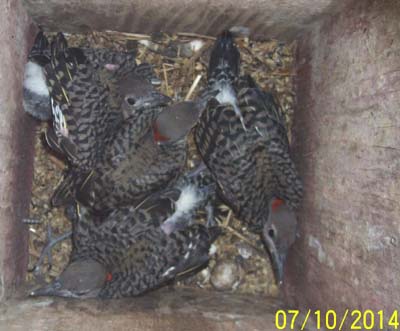 |
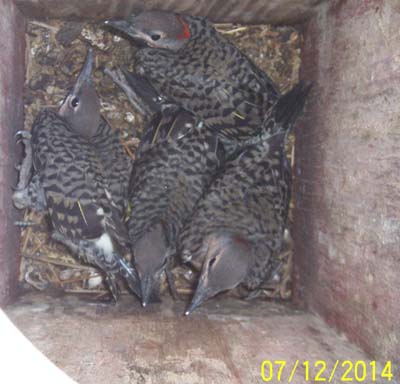 |
2015 and 2016 failed nestings European starlings have prevented all flicker nesting attempts in the past two years even though pairs of starlings were frequently removed from the nest boxes in 2015. Less monitoring was done in 2016, due to our busy schedule in dealing with Diane's cancer treatment. The kestrel pair nested in box A and, while starling nests were removed from boxes B, S, and C, infrequent trapping tied up the boxes much of the time. Waiting out the starlings did not allow the flickers to nest late this year because the mobs of newly fledged juvenile starlings relentlessly stormed the nest boxes on the barn as late as July 22. This was new! The large mulberry tree that lures starlings to the barn yard was bare of fruit in July, but the ruffians came anyway, continuing to enter the nest boxes and even sometimes fighting among themselves in the boxes. In June, as a last ditch effort to provide a box for the flickers, I opened the pole mounted box in the barn yard. This box was closed as soon as it was erected because it was in direct view of the entrance to the barn swallow colony. I realized that kestrels might use the box. I had observed a red bellied woodpecker tapping on the metal hole cover, but, he likely just liked the sound made by tapping on the metal. As soon as the box was opened, the male flicker immediately entered the box and positioned himself in the entrance for hours at a time. Several days later, a female landed at the entrance and peered in, but nesting was never initiated. |
|
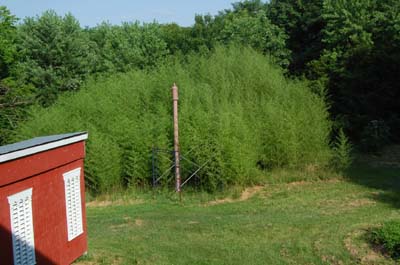
|
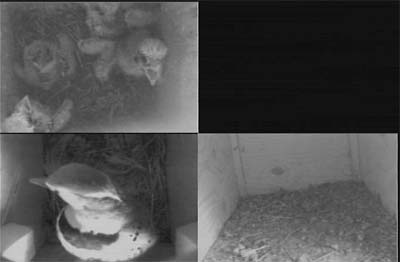
|
| The pole mounted box is finally opened after ten years. | Kestrel nestlings in box A, flicker visiting box B next door. |
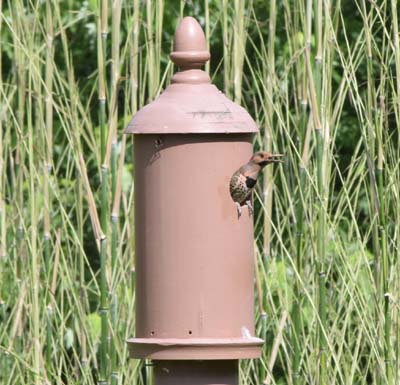
|
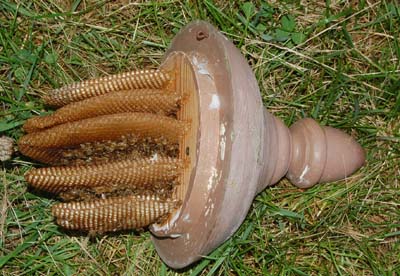
|
| The male flicker calling for his mate. He seldom left the entrance for several days.
|
Bees had entered through a small vent hole and attempted to build a colony. The combs were empty and the bees were dead.
|
| barn owl | American kestrel | purple martin | barn swallow | Eastern bluebird |
| tufted titmouse | Eastern phoebe | yellow shafted flicker | tree swallow | chimney swift |
| house wren | big brown bat | Carolina wren | brown thrasher | catbird |
| cedar waxwing | Northern mockingbird | |||
| Yellow warbler | Acadian flycatcher | |||
email richard@americanartifacts.com
© 2011, 2017, American Artifacts and Richard Van Vleck, Taneytown, Maryland.